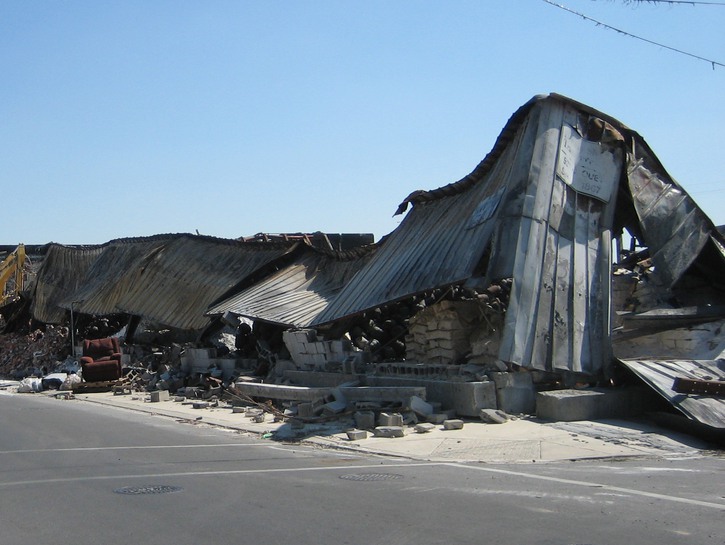Talk about not being able to hold your hooch! Lovers of brown spirits are hanging their heads low after a warehouse containing 20,000 bottles of Barton 1792 collapsed in Bardstown, KY. It’s estimated that 9,000 barrels were damaged by the collapse. At 53 gallons per barrel, that’s nearly half a million gallons of sweet Kentucky nectar!
This is a sad, sad sight https://t.co/eu9yuHE0ge
— Men's Health Mag (@MensHealthMag) June 27, 2018
The damaged warehouse was one of 29 barrel-aging facilities on almost 200 acres owned by Barton 1792. Kentucky distilleries are aging a total of 6.8 million barrels, according to the Kentucky Distillers’ Association.
Drone footage of the aftermath is quite the peculiar sight, as the warehouse seems to have been cleanly divided in two, with the remaining half in seemingly perfect condition. Things could always be worse!
As far as the cause of the collapse…no one really knows. According to Nelson County Dispatch Director Milton Spalding, “It was just a regular kind of morning with light rain, cloudy skies, so we’re not sure what triggered it.”
Luckily, there we no injuries or fatalities caused by the collapse, as the warehouse was primarily used for barrel storage. Not so lucky were local fish, hundreds of which died as a result of runoff spillage.
“It’s toxic to fish, so any fish ingesting (contaminated water), it will kill them,” said John A. Mura, director of communications for the Kentucky Energy and Environment Cabinet. “Secondarily, bacteria in the water actually consume the (substance) and in so doing deplete the oxygen level in the water, and that also kills the fish because they can’t breathe.”
Hundreds of fish killed in leak from bourbon warehouse collapse https://t.co/xCNFGfyQMr
— Nature Abounds (@NatureAbounds) June 28, 2018
According to CNN, up to 1,000 fish in the nearby Withrow Creek and Beach Fork River were killed. They included minnows, catfish, suckers, darts, gar, and largemouth bass. Kentucky environmental officials are prepared to fine Sazerac Inc., the distillery’s parent company, up to $25,000 per day for negligence leading to the collapse.
Kentucky Energy and Environment Cabinet’s Mura points out a silver lining, noting that natural precipitation helped flush the water away quicker than it might have otherwise. “The rain (helped) clear the contaminates out of the waterways.”
As per Nelson County building inspector Logan Spaulding, the warehouse may not have been regularly inspected leading up to the collapse. It was built in the 1940’s, pre-dating Nelson County’s code enforcement, as well as planning and zoning departments. This begs the question: what’s keeping from such a disaster from happening again, potentially hurting people and even more animals?
“Well, to be honest with you, I don’t guess anything,” said Spaulding.
Was this gross company negligence, or a genuine accident? What do you think?
